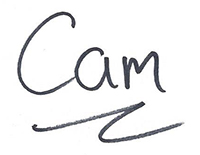
Why I WRITE Short stories
I’ve been asked by readers in the past why I write short stories for already existing series. Why not just make the stories longer, make them novels and be done with it?
The answer is compound and complicated and some aspects of it are purely mechanical, dictated by the peculiarities of the indie publishing industry.
So let’s start with the highly practical reasons first.
When indie publishing was in the flush of its first roaring success, Amazon was the king of the hill. Most indie authors were making the majority of their money on Amazon, so they spent a lot of time figuring out how Amazon worked and how to get better ranks and sales of their books.
Amazon is algorithm-driven. Actually, all online bookstores are driven by algorithms, but not nearly to the degree that Amazon is.
Indie authors spent a lot of time trying to nut out how the algorithms work on Amazon and one of the things they learned about was the 90-day “cliff”.
For the first 90 days after a book’s release, Amazon favored it with attention. It presented the book to readers who had read books like it in the past. The book appeared higher in search lists, and could also appear in the best-selling “new release” lists for each sub-category on Amazon.
This early attention could help lift the book higher in the ranks, earning it even more attention. If readers appeared to like the book—with clicks through on the covers, with sales, with positives reviews, etc., then Amazon would double down on the book, presenting it to even more readers.
This set up a very pleasant and rewarding self-fulfilling promotion cycle on Amazon, because even more readers would click on the book, read the description, buy the book, leave reviews and further encourage Amazon to make a fuss of it.
However, 90 days after release, Amazon stopped pushing the book.
Hopefully the book was high enough in rankings that it had created enough word of mouth to sustain the sales. But most books sank so quickly in rank and sales without Amazon pushing them that it was as if the sales had fallen off a cliff.
Indies quickly figured out that one could avoid that 90 day cliff by having another new release pop up on Amazon before the 90 days were over. The new release and the early attention given to it by Amazon would prop up the older title.
Only, as indie authors and their books flooded the market, the algorithms tightened up. There’s only so many books Amazon can highlight at once. After a couple of years of 90-day attention, Amazon’s 90-day cliff reduced to 60 days.
Then 30 days.
Still, indie authors tried gallantly to keep up the pace. You may have heard the term “rapid release” spoken by indie authors. This was the strategy used to flatter and seduce the algorithms and avoid the cliff—regardless of how short it became.
Hundreds of authors worked their fingers off trying to release a book every thirty days.
Now, I’m a fast writer, and I can write a novel in a month if I want to. But a novel every 30 days is just a tiny bit too fast for me. There comes a time when I need to draw a longer breath between books, to pause and recharge.
And there was a wrinkle in the algorithms, too—they worked for you if you were releasing a book more frequently than every 30 days…for that pen name.
I write under three pen names. That meant that one pen name was releasing a new book every 90 days.
So I got crafty and strategic, and wrote a short story in between each novel. Amazon didn’t care what length the story was, as long as it was new content every 30 days or less.
That meant I could produce a novel and a short story every 28 days, and if I rotated through the pen names and series, I could deliver new content for each pen name far more frequently.
And I did. I wrote a lot of shorts in the year or two I was flirting with the Amazon algorithm.
Then it became clear from authors combining data on tumbling sales that the 30-day cliff had become a 14-day cliff.
At which point, I gave up trying to keep the algorithm happy. The Rapid Release strategy has also lost favor with a great many authors who burned out or came close to it. We all found other ways to bring our books to the attention of readers that didn’t require pandering to a non-empathetic machine that kept changing the rules without notice.
Among the stories I wrote while I was trying to beat the “clock” were Flying Blind and But Now I See, which are part of the Indigo Reports series. I was still writing shorts in between novels when I started the Imperial Hammer series; An Average Night on Androkles was one of the last shorts I wrote while trying to beat the Amazon algorithm.
Amazon’s “cliff” was just one reason I wrote short stories within already existing series worlds. It’s one that no longer applies.
But the other four reasons do still apply, which is why I’ll keep writing short stories, novelettes and novellas, littering them in between novels.
The second reason is that writing a short story is a fantastic way to clear the palate. Short stories are a real change of pace from writing a novel. They require a different way of thinking about story structure. They’re not just novels cut down in size. There’s a different way of approaching them, plotting them, and structuring them.
So when I’m feeling a bit browned out with novel writing, especially if I’ve been hammering away at the same series for a while, writing a short story is a fantastic way of resetting the switches.
And actually, there’s a hidden bonus in this fact, too. Call it reason number two point one.
Consider that as Cameron Cooper, at one point not so long ago, I was writing three series simultaneiously. Under my other pen names I have, collectively, six other series on the go.
That’s a lot of series to rotate through. I’m not sure how I got to this point either. But some readers only read one of my series. If I’m writing a novel per series, and even if I’m writing at my usual rate (which I’ve heard other writers call “unnatural”) those readers can still wait a very long time for the next novel in the series. Even at my pre-cancer rate of thirteen books a year, that’s still over a year before I get to the next book in a single series.
But. If I’m writing short stories in between the novels, I can at least offer the reader a little bit of their favourite series while they’re waiting.
The third reason I like writing shorts is because readers ask for them.
I’ve lost count of the number of times I’ve had readers ask for the backstory of, well, whatever. How did xxx happen? What happened to xxx?
I’ve written at least six short stories that address questions readers have asked. An Average Night on Androkles answered the question I got from many readers about where Danny Andela’s parawolf came from.
But why write short stories? Why not just write novels answering those reader questions and be done with it?
Mostly because the events and histories and side stories aren’t part of the overall series story arc. If I made those side stories into novels, they would send the series story arc off into crazy zigzags, which wouldn’t make for a clean series story.
Also, most of these stories answering reader questions aren’t critical to understanding the overall series arc. You could just read the “main” novels to follow that and you don’t lose any understanding at all, if you don’t read the shorts.
That’s how my digital series numbering came about. I wanted a shorthand way of indicating where a short story fits into the whole series, where reading it wouldn’t lay down any spoilers for the main series. Giving the short stories a whole number would signal that they were required reading to follow the series, but they’re not. So I use digital numbering.
For example, Insanity is Infectious is numbered 7.1 in the Iron Hammer series. That means that you probably shouldn’t read it until you’re read book 7, Federal Force, but the “point one” indicates that it’s not a “main” story, and you can skip right over it if you want to.
The fourth reason I write shorts is because I like working with other authors in cooperative anthologies and boxed sets, and most of the time, the requirements for participating in those projects is a fresh, exclusive short story, or novelette or novella.
Mostly, I try to tie the stories I write for cooperative projects into a series I’m already writing, as the projects are short-lived. Once they are unpublished and done, and I get the story back, if it didn’t belong to a series, it would be difficult to get readers interested in it, as everyone loves ongoing characters and story situations.
Flying Blind is one of these stories. It first appeared in a science fiction anthology, now long gone out of print.
And the fifth reason I write short stories, novelettes and novellas is because I like reading and writing shorts. I like them a lot. Part 1 of this two-part post series explains.
There’s something very satisfying about delivering a highly emotional story with all the impact of a novel, in the length of a short story.
It’s advanced writing, and not only do I like the challenge, I like the end results, too. It’s a quick way to get a dopamine hit because writing a short story takes only a day or two, while a novel (even at my speed) can take at least a couple of weeks. Some writers take a year to write a novel – I honestly don’t know how they don’t get bored and quit, six months in. That’s a long time to live with a story that will be consumed in just a few hours by the reader.
____
Short stories may have started as a strategic tool for survival in the indie publishing jungle, but they’ve become one of the most rewarding parts of my writing life.
They’re quick to create, offer satisfying bursts of story between novels, and let me explore corners of my story worlds that wouldn’t fit in a full-length book.
I’d love to know—do you enjoy short stories? What are some of the most memorable ones you’ve read? Drop your favourites in the comments—I’m always on the lookout for a great short read.

Latest releases:
Quiet Like Fire
Solar Whisper
Ptolemy Lane Tales Omnibus
That was very interesting. I’ve often wondered why some authors crank out short stories when I am hanging out for the next installment of a series I am mid-transit in. You’ve explained matters very clearly… and… sadly.
It is yet another reason why I avoid Amazon kindle and it’s products. (I use primarily either an author’s own shop or Kobo). They are concerned, not with the creative process, but maximizing profits, regardless of the means by which they are attained. And, methinks, stories suffer when authors are pressured to jump on The Churn.
Forcing any sort of relationship (author to reader, husband to wife etc…) will rarely end without a lot of unnecessary tears…
It’s also the cause of a lot of author burnout…and some of those authors never recover. Alas, for they were creating great stories.
Story-telling will continue in some form or another. It’s human nature to tell stories. But the indie industry is changing and for many authors, it’s not sustainable. It’ll be interesting to see where it ends up.
Cam.